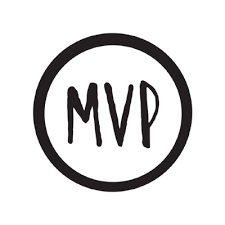
Orthopedic companies have a blind spot that software companies don’t have. I believe that Ortho companies can learn a lesson from the software companies.
Software companies race to develop the”minimum viable product” or MVP. They get their MVP into the hands of a small group of customers as early as possible.

Definition: The minimum viable product (MVP) was coined during the DotCom boom. The MVP allows a team to collect the maximum amount of learning about customer experiences of a new product with the least amount of effort.
An MVP is a barely useable product and it’s a starting point. Reid Hoffman insists that you should be embarrassed by your first product release used in the field. If you are not embarrassed then you have released the first product too late.
With their MVP product in hand, successful startups then aggressively collect feedback from early customers (usually family and friends). This early feedback enables them to redesign and go to version 2.0 as fast as possible. The final product is not launched yet. Most customers will never know about the early MVP product.
Why do this?
Because perfectionism kills startups. Don’t let best become your holy grail. Better is good enough. This is your MVP. No company gets it right the first time. The cold hard truth is that any company has a slim and none chance of getting the product right the first time. Let’s say less than 5%.
Software companies know this.
Orthopedic companies don’t know this.
Most ortho device companies push engineering teams to perfection, then “freeze” the design, then file with the regulatory agencies, then push sales/marketing teams to “launch”. They have faith that their internal gating processes to yield the best product. They mistakenly believe that their Marketing leaders, their Quality System, and their New Product Development procedures can produce a great product within one iteration. Innovation doesn’t work like this. This is a blind spot for orthopedics.
Don’t believe me. Look back at the innovation homeruns in orthopedics. Stories about Danek, SpineTech, Kyphon, Arthrex, MAKO, Hand Innovations and Mazor that rocketed to success through innovation. The misconception is that these forerunners had a brilliant innovation idea and executed it perfectly. The truth is they embraced the MVP concept. In each iteration, their MVP products were not very good. All of these super-successful companies experimented and upgraded their product designs over-and-over on their way to success.
I have worked for Orthopedics startups that understood the MVP philosophy. One startup raced to the MVP as fast as possible by prototyping for cadaver lab evaluations every 6 weeks. After about 10 of these consecutive labs, the product prototype was deemed to be ready for the MVP stage. The startup would then turn its sights towards clinical experience. We took this nascent MVP product through the regulatory clearance “in a far away land” to get the MVP into the hands of surgeons. In a series of cases in a remote country, we quickly captured the necessary usability and outcomes feedback. We did this without any firm plans of FDA submissions, CE Marks or US market launches. The goal was to collect the maximum amount of validated learning with the least effort. Done.
It’s amazing how much information you can learn in less that 12 months using the MVP.
If your orthopedic company can embrace the MVP feedback process you will launch better products. I promise.
If you need help, I can show you how to try an MVP strategy at your company.
email: tiger@tigerbuford.com

 The Orthopedics Industry
The Orthopedics Industry